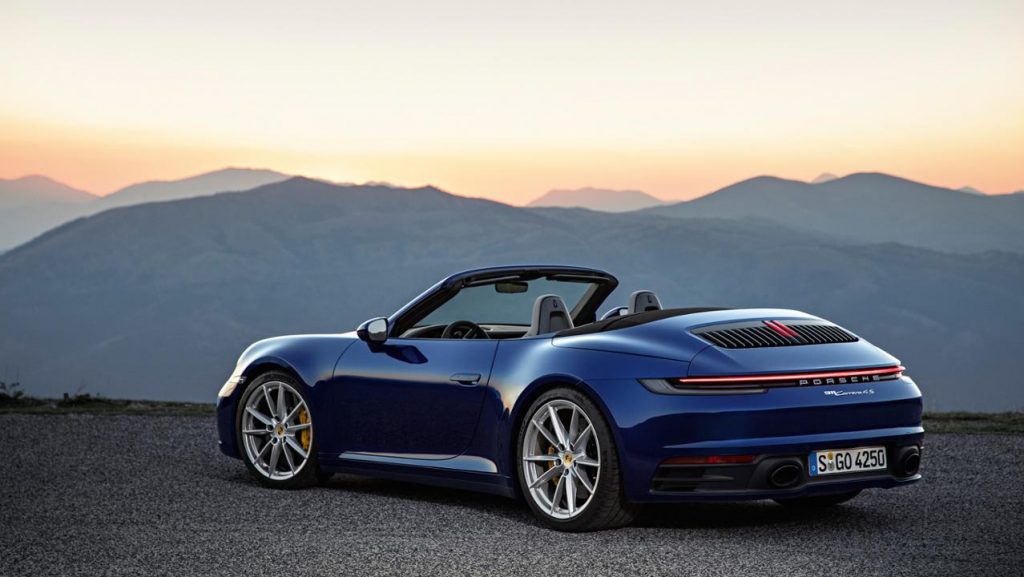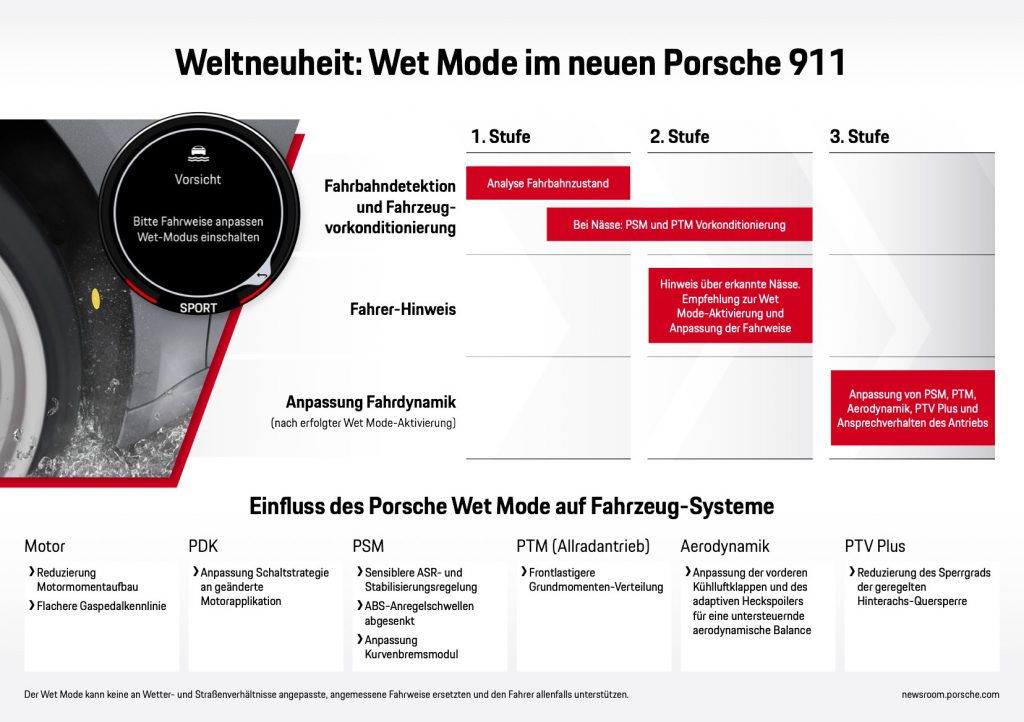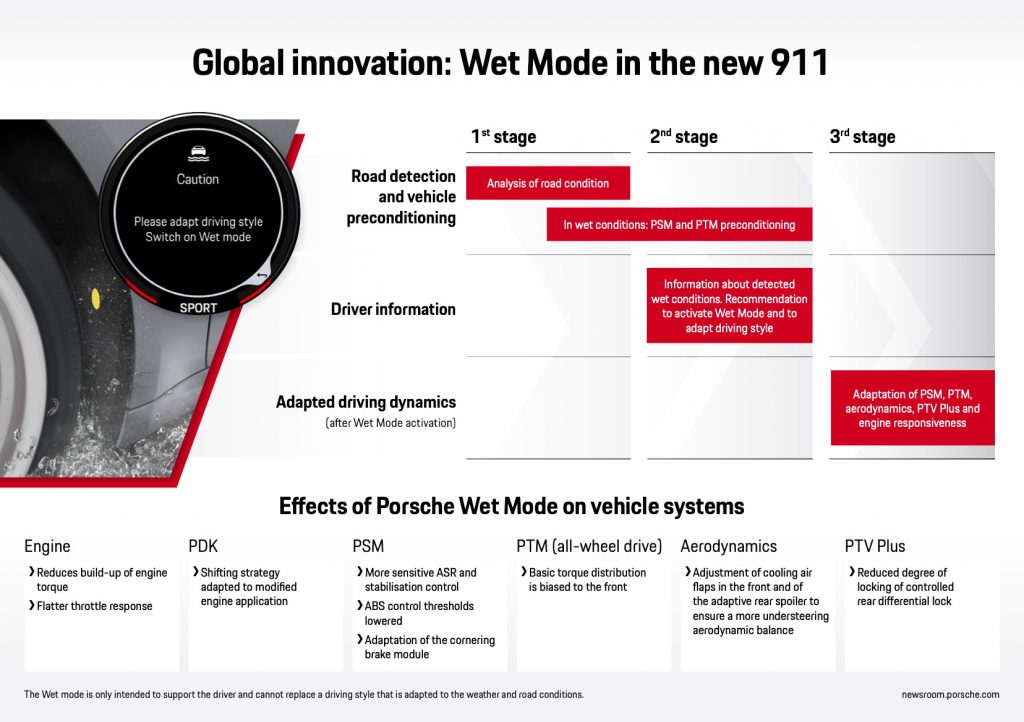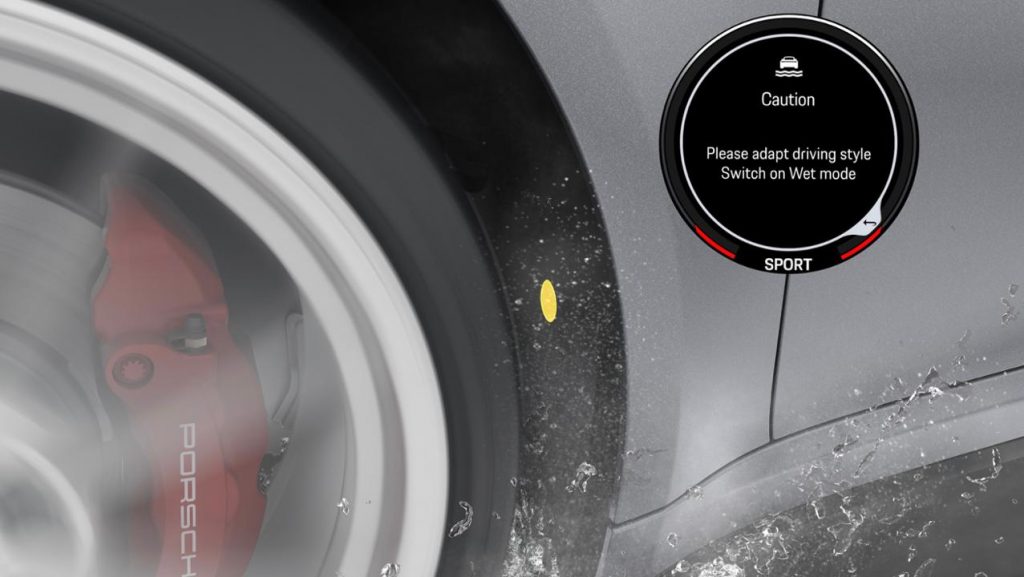#New #Porsche911 #Carrera #Cabrio #GIMS2019

GER_ENG copy For english scroll down please.
Sechs Wochen nach dem Debüt des Coupés zieht das 911 Cabriolet die Blicke auf sich. Der offene Elfer setzt damit eine jahrzehntelange Tradition fort.

Als Porsche im September 1981 den Prototyp des ersten 911 Cabriolets auf der Internationalen Automobil-Ausstellung (IAA) in Frankfurt zeigte, waren Kunden und Fans auf Anhieb begeistert. Seither hat die offene Elfer-Variante, die ab 1982 ausgeliefert wurde, einen Stammplatz im Modell-Programm. Die offene Version der Sportwagen-Ikone, die im Jahr 2019 den Auftakt zu einem bislang nicht gekannten Produktfeuerwerk markiert, besitzt alle Innovationen des Coupés. Zu den spezifischen Weiterentwicklungen für das Cabriolet gehört eine neue Hydraulik, die das Verdeck schneller als bisher öffnet und schließt.

Das neue Modell übernimmt die moderne Formensprache des Coupés, bleibt aber auch als Cabriolet unverkennbar ein Porsche 911. Das vollautomatische Stoffverdeck besitzt eine feste Glas-Heckscheibe. In der Verdeck-Struktur sind flächige Magnesium-elemente integriert, sogenannte Flächenspriegel, die das Aufblähen des Daches bei hohen Geschwindigkeiten zuverlässig unterbinden. Das Verdeck kann bis zu einer Geschwindigkeit von 50 km/h geöffnet oder geschlossen werden. Die neue Dach-Hydraulik verkürzt die Öffnungszeit auf rund zwölf Sekunden, ein elektrisch ausfahrbares Windschott nimmt dem Sturm im Nacken die Spitze.

Das 911 Cabriolet startet als Carrera S mit Hinterrad- und als Carrera 4S mit Allradantrieb. Beide vertrauen auf den 2.981 cm³ großen, aufgeladenen Sechszylinder-Boxermotor mit 331 kW (450 PS; 911 Carrera S Cabriolet: Kraftstoffverbrauch kombiniert 9,1 l/100 km; CO2-Emissionen kombiniert 208 g/km; 911 Carrera 4S Cabriolet: Kraftstoffverbrauch kombiniert 9,0 l/100 km; CO2-Emissionen kombiniert 207 g/km) bei 6.500/min und 530 Newtonmeter Drehmoment zwischen 2.300 und 5.000/min. Ein verbessertes Einspritzverfahren und weitere Optimierungsmaßnahmen wie neu angeordnete Turbolader samt Ladeluftkühlung erhöhen den Wirkungsgrad und reduzieren die Emissionen im Antrieb. Die Kraftübertragung übernimmt ein neu entwickeltes Achtgang-Doppelkupplungsgetriebe. Der Carrera S beschleunigt in 3,9 Sekunden aus dem Stand auf Tempo 100 (mit optionalem Sport Chrono-Paket: 3,7 s) und wird bis zu 306 km/h schnell. Der Carrera 4S erreicht 304 km/h Spitze und beschleunigt in 3,8 Sekunden auf 100 km/h (mit optionalem Sport Chrono-Paket: 3,6 s).

Durch die neue Position der Motorlager ist das Cabriolet noch torsionssteifer als der Vorgänger. Erstmals für das 911 Cabriolet im Angebot ist das Porsche Active Suspension Management (PASM) Sportfahrwerk. Die Federn sind in diesem Fall härter und kürzer, die Querstabilisatoren der Vorder- und Hinterachse steifer, das Fahrwerk insgesamt ist um zehn Millimeter abgesenkt. Damit liegt der Elfer noch neutraler und ausbalancierter auf der Straße.
Exterieur-Design orientiert sich an frühen Elfer-Generationen

Das neue 911 Cabriolet tritt breiter, selbstbewusster und insgesamt muskulöser auf als der Vorgänger. Über den großen Rädern mit vorn 20 und hinten 21 Zoll Durchmesser wölben sich breitere Kotflügel. Die hinterradangetriebenen Modelle übernehmen dabei die bisherige Karosserie-Breite der Allradmodelle. Der Zuwachs an der Hinterachse beträgt hier 44 Millimeter. Der generell um 45 mm breiter gewordene Vorderwagen greift ein traditionelles Thema früherer 911-Generationen auf: die lang nach vorn gezogene Kofferraumhaube mit einer markanten Vertiefung vor der Windschutzscheibe. Beides streckt die Frontpartie und verleiht Dynamik.
Am Heck dominieren der deutlich breitere, variabel ausfahrbare Spoiler und das durchgehende, nahtlose feine Leuchtenband. Mit Ausnahme des Bug- und Heckteils besteht die gesamte Außenhaut aus Aluminium.

Neu gestaltetes Interieur mit klarer Linienführung
Das Interieur ist geprägt von den klaren und geraden Linien der Armaturentafel mit der zurückversetzten Instrumentenebene. Die Armaturentafel verläuft wie beim Ur-Elfer über die gesamte Breite zwischen zwei horizontalen Flügelebenen. Neben dem mittig positionierten Drehzahlmesser informieren zwei dünne, rahmenlose Freiform-Displays den Fahrer. Der jetzt 10,9 Zoll große Centerscreen des Porsche Communication Management (PCM) lässt sich schnell und ablenkungsfrei bedienen.
Umfangreiche Assistenzsysteme für mehr Sicherheit und Komfort
Als Weltneuheit hat Porsche den serienmäßigen Wet Mode entwickelt. Die Funktion erkennt Wasser auf der Straße, konditioniert die Regelsysteme entsprechend vor und warnt den Fahrer.

Dieser kann den Wagen dann auf Tastendruck oder per Mode-Schalter am Lenkrad (Sport Chrono-Paket) besonders sicherheitsbetont abstimmen. Der ebenfalls serienmäßige Warn- und Bremsassistent erkennt kamerabasiert die Gefahr von Kollisionen mit Fahrzeugen, Fußgängern und Radfahrern und leitet gegebenenfalls eine Warnung oder Notbremsung ein. Ein Park-Assistent inklusive Rückfahrkamera ergänzt die Serienausstattung beim Cabriolet. Optional sind für den 911 ein Nachtsichtassistent mit Wärmebildkamera sowie der Abstandsregeltempostat mit automatischer Distanzregelung, Stop-and-go-Funktion und reversiblem Insassenschutz verfügbar.


Verbrauchsangaben
911 Carrera S Cabriolet: Kraftstoffverbrauch kombiniert 9,1 l/100 km; CO2-Emissionen kombiniert 208 g/km;
911 Carrera 4S Cabriolet: Kraftstoffverbrauch kombiniert 9,0 l/100 km; CO2-Emissionen kombiniert 207 g/km.
All set for open-top season – the new 911 Cabriolet
Six weeks after the Coupe’s launch, attention turns to the 911 Cabriolet.

The open-top 911 continues in a decades-long tradition, established when Porsche unveiled the prototype of the first 911 Cabriolet at the International Motor Show (IAA) in Frankfurt in September 1981. Customers and fans alike were instantly captivated. The first open-top 911 variant rolled off the production line in 1982, and it has been a constant feature in the model range ever since. The open-top version of the iconic sports car will be launched in 2019 to almost unprecedented fanfare. It includes all the innovative features of the Coupe, along with Cabriolet-specific advanced features such as new hydraulics which get the roof opened and closed more quickly than ever.

The new model echoes the modern lines of the Coupe, though it remains unmistakably a Porsche 911 in Cabriolet form. The fully-automatic soft top has an integrated glass rear window, while the soft top structure contains magnesium surface elements known as bows, which reliably prevent ballooning of the roof at high speeds. The soft top can be opened or closed at speeds up to 50 km/h. New roof hydraulics reduce opening time to around twelve seconds, while an electrically extendable wind deflector ensures that necks are shielded from wind impact.

The 911 Cabriolet is initially available as a Carrera S with rear-wheel drive and Carrera 4S with all-wheel drive. Both rely on a 2,981 cm³ charged six-cylinder boxer engine with 331 kW (450 PS; 911 Carrera S Cabriolet: Combined fuel consumption 9.1 l/100 km; combined CO2 emissions 208 g/km; 911 Carrera 4S Cabriolet: Combined fuel consumption 9.0 l/100 km; combined CO2 emissions 207 g/km) at 6,500 rpm and 530 Nm torque between 2,300 and 5,000 rpm. The drive efficiency has been increased and emissions reduced by way of an improved injection process; other optimisation measures have also been implemented, such as a new layout for the turbochargers and charge air cooling system. The power is delivered by a newly developed eight-speed dual-clutch transmission. The Carrera S accelerates from zero to 100 km/h in 3.9 seconds (with optional Sport Chrono Package: 3.7 seconds) and can reach speeds up to 306 km/h. The Carrera 4S attains a top speed of 304 km/h and achieves 0-100 km/h in 3.8 seconds (with optional Sport Chrono Package: 3.6 seconds).

The new engine mounting position makes the Cabriolet even more torsionally rigid than its predecessor. For the first time, Porsche Active Suspension Management (PASM) sport chassis is available for the 911 Cabriolet. The springs used for this are harder and shorter, the front and rear anti-roll-bars are more rigid, and the chassis overall has been lowered by ten millimetres. These adjustments give the 911 a more neutral feel on the road, with better weight distribution.
An exterior design that draws on earlier generations of the 911

The new 911 Cabriolet looks wider, more self-assured and altogether more muscular than its predecessor. Wider wings arch over the large 20-inch wheels at the front and 21-inch wheels at the rear. The rear-wheel-drive models now match the bodywork width of the existing all-wheel models. The rear axle is 44 mm larger. The front end – generally 45 mm wider – revives a traditional feature from earlier 911 generations: a forward-extended bonnet with a distinctive recess in front of the windscreen. Both elements lengthen the front of the vehicle and give it a dynamic look.
The rear of all models is dominated by the significantly wider, variable-position spoiler and the continuous, seamless and elegant light bar. With the exception of the front and rear sections, the entire outer skin is now made from aluminium.

Redesigned interior with clear lines
The interior is distinctive, with the clear, straight lines and recessed instruments defining the dashboard. As it does in the original 911, the new dashboard covers the entire width between two horizontal wing levels. Alongside the centrally positioned rev counter, two thin, frameless freeform displays deliver information to the driver. Now 10.9 inches in size, the centre screen of the Porsche Communication Management (PCM) can be operated quickly and without causing distraction.
Sophisticated assistance systems enhance safety and comfort
In a world first, Porsche has developed Wet Mode, which is included as standard. This function detects water on the road, preconditions the control systems accordingly and warns the driver, who can then set the car up to focus on safety, by simply pushing a button or using the mode switch on the steering wheel (Sport Chrono Package).

The camera-based warning and brake assist system, also fitted as standard, detects the risk of collision with vehicles, pedestrians, and cyclists, and initiates a warning or emergency braking procedure if necessary. A park assistant system including reversing camera completes the standard configuration of the Cabriolet. Options for the 911 include Night Vision Assist with thermal imaging camera, as well as adaptive cruise control with automatic distance control, stop-and-go function and reversible occupant protection.

Consumption data
911 Carrera S Cabriolet: Combined fuel consumption 9.1 l/100 km; combined CO2emissions 208 g/km
911 Carrera 4S Cabriolet: Combined fuel consumption 9.0 l/100 km; combined CO2emissions 207 g/km
images video and graphics Porsche AG


